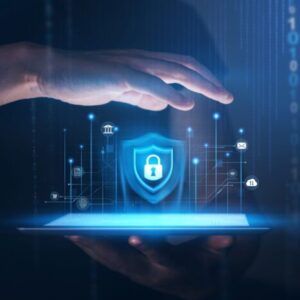Envisioning the Future of Software Supply Chain Security
 As we look toward 2035, the landscape of software supply chain security is poised for transformative changes. The convergence of innovation and security will redefine how software is developed, distributed, and maintained, ensuring that security becomes an integral component of the development process rather than an afterthought.
As we look toward 2035, the landscape of software supply chain security is poised for transformative changes. The convergence of innovation and security will redefine how software is developed, distributed, and maintained, ensuring that security becomes an integral component of the development process rather than an afterthought.
The Current Landscape: Challenges and Vulnerabilities
In recent years, high-profile supply chain attacks, such as the SolarWinds breach and the Log4Shell vulnerability, have exposed significant weaknesses in our digital infrastructure. These incidents have highlighted the risks associated with trusted tools being compromised, leading to widespread vulnerabilities. The traditional reactive approach to security—addressing threats post-incident—has proven inadequate in preventing such breaches.
A Vision for 2035: Integrating Security and Innovation
By 2035, the goal is to have development environments where verifying the integrity of software components is as automatic as syntax highlighting is today. This means that every piece of code, every container image, and every software dependency will carry cryptographic proof of its build process and composition. In this envisioned future:
- Automated Integrity Verification: Development tools will automatically verify the integrity of dependencies, ensuring that only trusted components are integrated into software projects.
- Cryptographic Proofs: Every software artifact will include cryptographic evidence of its origin and build process, enabling developers and users to trust the software they utilize.
- Built-in Security: Security measures will be inherently integrated into development processes, eliminating entire categories of risks and vulnerabilities.
Emerging Building Blocks: Standards and Initiatives
The foundation for this transformation is already being laid through new standards and industry initiatives. For instance, Sigstore is an initiative aimed at making code signing ubiquitous and accessible, providing a method for developers to securely sign software artifacts. Such efforts are crucial in establishing trust and integrity in the software supply chain.
Shifting Perceptions: Security as an Enabler of Innovation
A critical aspect of this future is changing the perception that security measures hinder development speed. When thoughtfully designed and seamlessly integrated, security controls can accelerate development by preventing incidents that would otherwise cause delays. By embedding security into the development lifecycle, organizations can foster innovation while maintaining robust security postures.
Collaborative Efforts: Building a Secure Ecosystem
Achieving this vision requires collaboration across the entire software ecosystem:
- Developers and Enterprises: Adopting secure development practices and tools that integrate security into the software lifecycle.
- Open-Source Communities: Implementing measures to ensure the integrity and security of open-source components.
- Cloud Providers: Offering services that support secure software development and distribution.
By making security an inherent part of development tools and processes, we can build a world where every line of code is secure by default, and trust is established through verification rather than assumption. This approach is essential not only for businesses but also for society, as software increasingly powers critical infrastructure, medical devices, and financial systems.
Conclusion
The next decade holds the promise of a software supply chain where security and innovation are not at odds but are mutually reinforcing. By embracing automated integrity verification, cryptographic proofs, and built-in security measures, we can create a resilient digital ecosystem capable of withstanding emerging threats. This proactive approach will ensure that as technology evolves, security remains a foundational element, safeguarding the trust that underpins our digital world.
